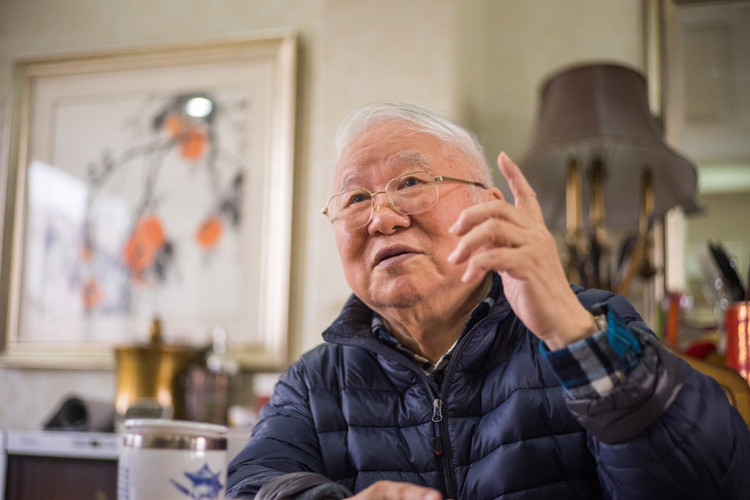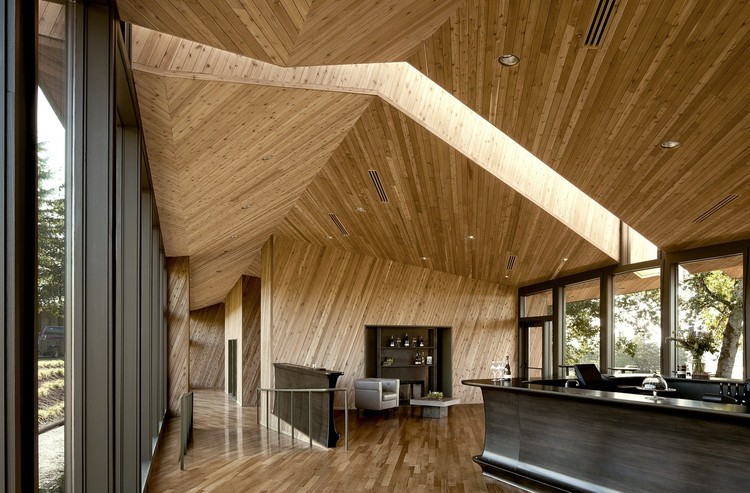
Creating a model for rendering does have its own set of rules. To get you up and rendering as quickly as possible, here are SketchUp's top five tips for prepping your SketchUp model for rendering.


Creating a model for rendering does have its own set of rules. To get you up and rendering as quickly as possible, here are SketchUp's top five tips for prepping your SketchUp model for rendering.

If you are in a place impacted by the COVID-19 pandemic, spending 20 minutes experiencing nature in a park, street, or even your backyard can significantly reduce your stress levels. Just be sure to follow federal, state, and local guidelines and maintain social distancing of 6 feet or 2 meters. But even if you cannot or are unable to go outside, taking a break by opening a window and looking at a tree or plant can also help de-stress.

3XN/GXN have revealed their design for a new CO2 neutral and climate positive addition to the Hotel Green Solution House (Hotel GSH), in Rønne on the Danish island of Bornholm. Scheduled for 2021, the new wing including 24 rooms, a conference room, and a roof spa, is expected to provide a positive climate footprint when built, a novelty in Danish commercial buildings.

Kengo Kuma & Associates and Mad Arkitekter won the competition for the new Ibsen Library in Skien, Norway. Working with BuroHappold Engineering, the team created the design to celebrate the renowned playwright Henrik Ibsen. As a new cultural center for the city, the project creates multiple access points across multiple floors to form a welcoming environment. The library aims to make Ibsen’s drama and literature accessible to everyone.

Whether by traditional windows, linear openings in the wall, or skylights, the manipulation and incorporation of natural lighting in architectural projects can render a radical change in interior spaces.

In a time where space grows more and more limited and people increasingly spend time at home, flexibility presents itself as an underutilized strategy of interior design. With flexible furniture, residents can optimize square footage and easily reshape configurations according to specific requirements and shifting needs. Below, we discuss the benefits and variations of furniture on wheels, closing with 7 example projects illustrating their creative and practical application.

Space has long captured our imaginations. Looking to the ocean above us, writers, scientists and designers alike have continuously dreamed up new visions for a future on distant planets. Mars is at the center of this discourse, the most habitable planet in our solar system after Earth. Proposals for the red planet explore how we can create new realms of humanity in outer space.

Four emerging architecture studio profiles from Belgium, Spain, Netherlands, Switzerland, Denmark, and Poland were chosen by New Generations, a platform that analyses the most innovative emerging practices at the European level, providing a new space for the exchange of knowledge and confrontation, theory, and production. Since 2013, New Generations has involved more than 300 practices in a diverse program of cultural activities, such as festivals, exhibitions, open calls, video-interviews, workshops, and experimental formats.

Across the globe, ever since 2014, every year on the 31st of October, World Cities Day is celebrated. To mark this event, UN-Habitat has released its World Cities Report 2020 on the value of sustainable urbanization, focusing on the most up-to-date and pressing topics. Analyzing the intrinsic value of cities in generating economic prosperity, mitigating environmental degradation, reducing social inequality, and building stronger institutions, the report highlights how together these can drive transformative change.

KCAP Architects & Planners won the international competition for one of the Bucheon Daejang New Town as part of the Seoul metropolitan region in South Korea. Titled Open Fields City, the proposal was made with DA GROUP to create new urban quarters characterized by "fields" and interconnected pathways.

Using and controlling light can change the perception of a place; users perceive and feel the space differently depending on factors such as the type of light switch, color variations, and combinations. When used in temporary installations, light can break the boundaries between art and architecture, and also between tangible and intangible, transforming the elements of the project and creating new shapes and patterns.

Spurred by disasters like Hurricane Katrina and Superstorm Sandy, cities across the United States have, over the past 15 years, learned to “live with water.” After more than a century of filling wetlands, damming rivers, and diverting streams and stormwater flows into concrete channels, public officials, influenced by a coterie of landscape architects and planners, have embraced the opposite strategy, investing in open space networks that use dynamic natural systems to slow, store, and absorb floodwaters.

Some celebrate the failures of "Make It Right", Brad Pitt’s patronage in New Orleans. After Hurricane Katrina wrecked New Orleans in 2005, celebrated architects like Frank Gehry, David Adjaye and Thom Mayne created art for a foundation set up by Pitt. A local architect, John C. Williams was hired to turn designs from those starchitects into buildings with a directive to use the best sustainable materials available.

The Midnight Charette is an explicit podcast about design, architecture, and the everyday. Hosted by architectural designers David Lee and Marina Bourderonnet, it features a variety of creative professionals in unscripted conversations that allow for thoughtful takes and personal discussions. A wide array of subjects are covered with honesty and humor: some episodes provide useful tips for designers, while others are project reviews, interviews, or explorations of everyday life and design. The Midnight Charette is also available on iTunes, Spotify, and YouTube.
This week David and Marina discuss tips and tactics for creating a design presentation. The two cover the different scenarios to prepare for, the three most important components of any design presentation, how to include research and data, balancing beauty and clarity, tips if you’re struggling to make a presentation look good, presentation process strategies, and traps to avoid, and more. Enjoy!

The International Highrise Award (IHA), organized by the city of Frankfurt and the Deutsches Architekturmuseum (DAM), has selected Norra Tornen, the residential towers designed by OMA / Reinier de Graaf as the winner of its ninth edition. Granted every 2 years, to architects and developers for buildings of minimum 100 meters in height, completed in the last two years, Norra Tornen was selected from 31 projects from 14 countries.

Chinese architect and town planner Wu Liangyong was recently featured in a new interview from the International Union of Architects (UIA) about his life and teaching. As the former Vice-President of the UIA and the Architectural Society of China (ASC), Liangyong won the Jean Tschumi Prize back in 1996. Today, he reflects on his academic career spanning 70 years at the Tsinghua University School of Architecture.

Considered one of the noblest building materials - and also a favorite of many global architects - wood delivers aesthetic, structural, and practical value in the most versatile of ways. Through different techniques, such as crafted or prefabricated wood, wooden construction remains relevant not only in the history but also in the forefront of architecture and design (thanks to new technologies that have expanded its possibilities).
From temporary pavilions to single-family homes and multi-story, large-scale institutions, wood has shown its value at the same level as many other structural materials such as steel, brick, or even concrete. This is especially prominent in the United States, where renowned architects are using new techniques to advance the solutions that this material can provide. Also, new regulations are allowing architects to further explore the diversity and possibilities of building with wood.
With the help of ThinkWood, we’ve gathered 100 examples of the best wood structures in the United States.

Going beyond human scale is not a novelty. For centuries, builders, engineers, and architects have been creating monumental edifices to mark spirituality or political power. Larger than life palaces, governmental buildings, or temples have always attracted people’s admiration and reverence, nourishing the still not fully comprehensible obsession with large scale builds.
Nowadays, some of the largest and most impressive structures relate less to religious or governmental functions and seem to be turning towards more cultural programs. Most importantly though, today’s grandiose works are generally and openly imitative of Nature.

This article was originally published on Common Edge as "Considering Climate Migration".
Over the past week, I’ve seen at least two large mainstream press articles on climate migration, and as more people seem to be tossing around their next move locale—something between North Dakota and anywhere else with the word “north” it. Often, in a simplified, single-issue flattening of the full-range of shifts happening around us.